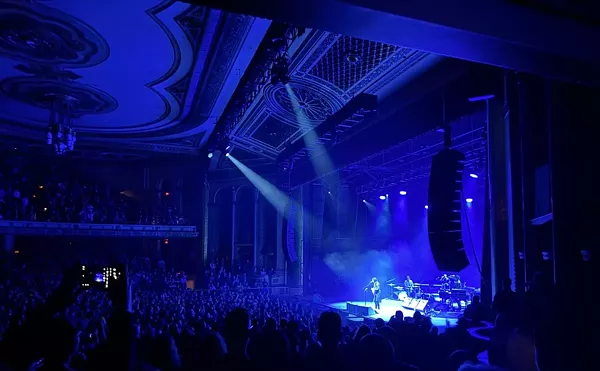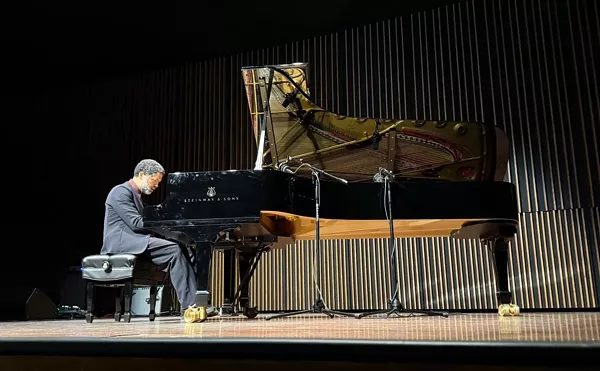
Audio By Carbonatix
[
{
"name": "GPT - Leaderboard - Inline - Content",
"component": "35519556",
"insertPoint": "5th",
"startingPoint": "3",
"requiredCountToDisplay": "3",
"maxInsertions": 100,
"adList": [
{
"adPreset": "LeaderboardInline"
}
]
}
]
Philip Glass has a horde of slavish devotees, but even his fiercest admirers must be at long last tiring of his same old song. Glass’ contemporaries, John Adams and Steve Reich, broke out of the minimalist straitjacket and went on to compose more challenging works. Glass, however, shows little growth as a composer; there is the familiar repetition, extremely limited harmonic vocabulary and mind-numbing, vapid musical figures. The Symphony No. 3, however, which receives its world premiere recording here, isn’t quite so insipid. The second movement actually has some variety, with its syncopation and stabbing accents providing a bit of rhythmic interest. The third movement, unfortunately, falls into listless repetition, and the uninspired fourth movement sounds like the sound track for a James Bond film.
Moreover, the 1995 work is not a real symphony in the conventional sense, where there is development and organic unity. Also, it should be more aptly called a string symphony, for that’s the only section of the orchestra Glass has written for here. Glass favors the low strings, which is fine, except that too much of this is like a painter dipping into the same hue, the result being bland and monochromatic. At least Glass has shrugged off the influence of Brian Eno and David Bowie, whose music colored his “Low” and “Heroes” symphonies. Under Dennis Russell Davies, a Glass champion, the musicians of the Stuttgart Chamber Orchestra sound uninspired, especially in the last movement, where the articulation is weak and flabby. And who can blame them? This droning music would make most musicians heavy-lidded. The forces do spring to life in the second movement, however.
The other selections on this disc are even more insipid than the Symphony No. 3. The “Mechanical Ballet” from Glass’ 1990 opera, The Voyage, can be summed up by the word “mechanical.” The two interludes from “The CIVIL warS” have occasional moments of interest, particularly in the second interlude, when the orchestration becomes a bit more ambitious. But the final track, 1987’s “The Light,” is a 21-minute bore, where the tempo sometimes changes, but little else does. The musicians of the Vienna Radio Symphony Orchestra play rotelike, befitting the music. Harmony gives music variety, and an expansive harmonic language gives composers a field of almost endless adventure. But Glass’ harmonic vocabulary is so narrow that the adventure amounts to a jaunt that goes in ever-narrowing circles.
George Bulanda writes about music for the Metro Times. E-Mail letters@metrotimes.com.





